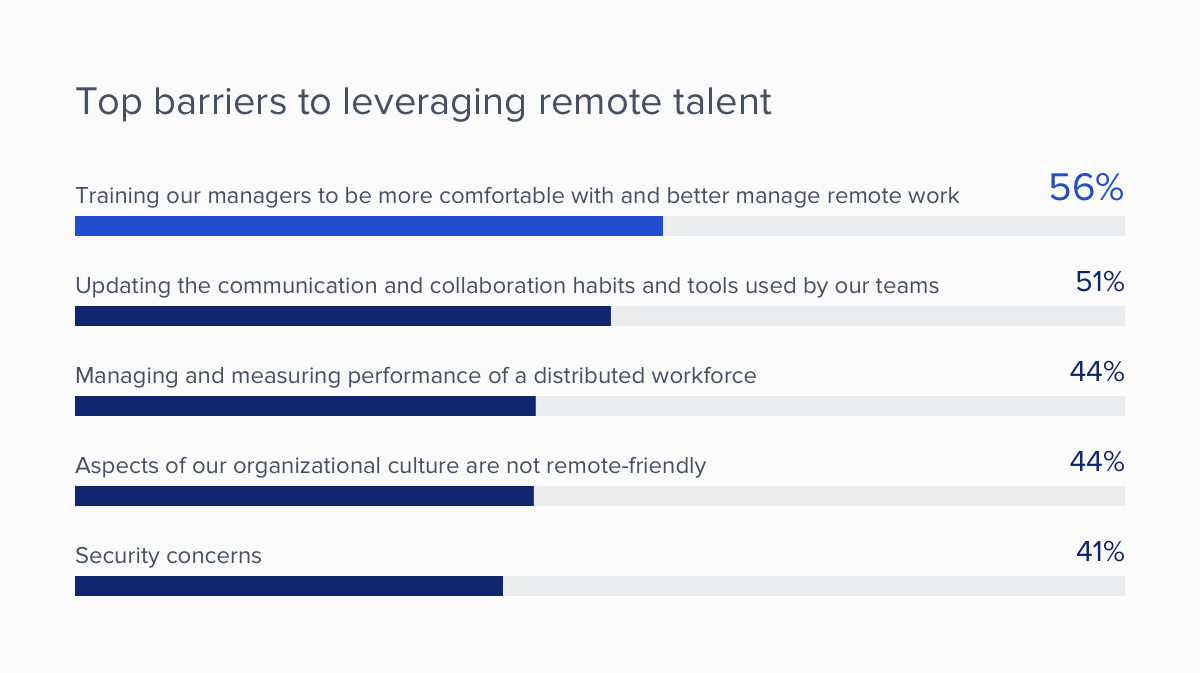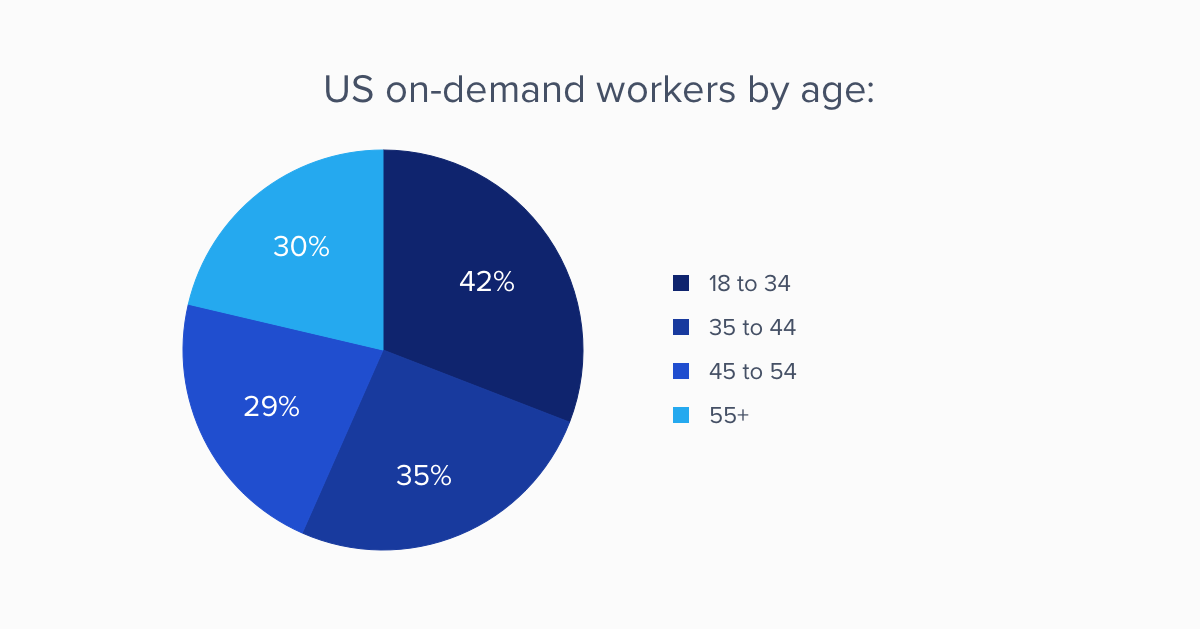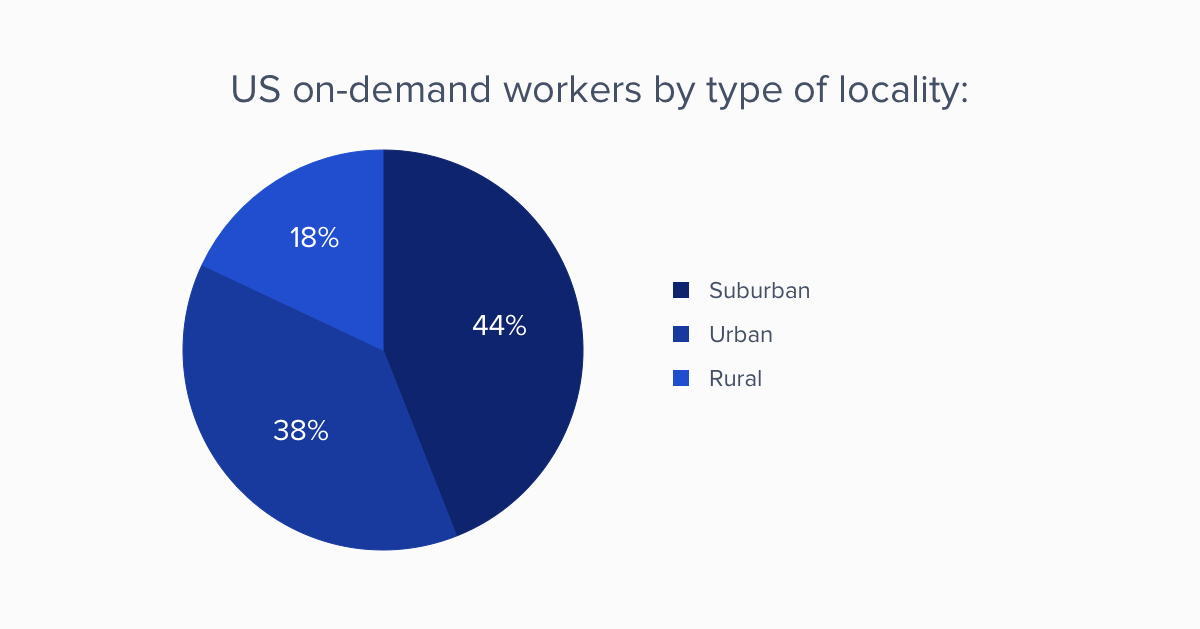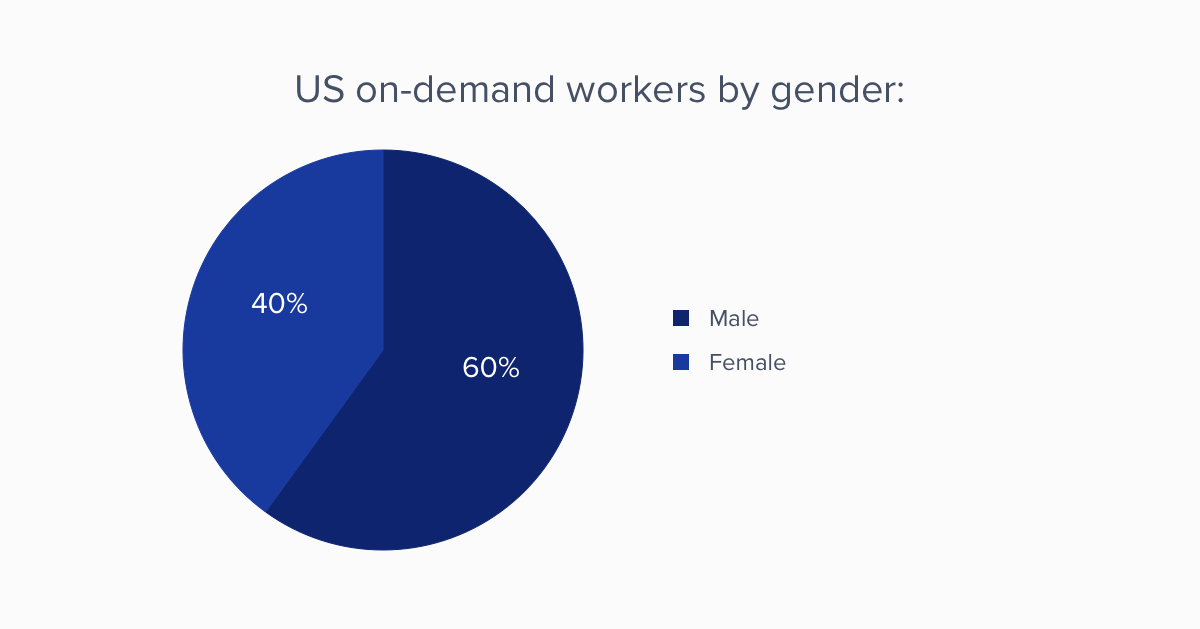Removing Roadblocks: The 5 Most Common Challenges of Hiring On-demand Talent and How To Overcome Them
authors are vetted experts in their fields and write on topics in which they are extremely knowledgeable. All of our content is peer reviewed and validated by world-class professionals.

- Companies are faced with makeshift hiring processes, inexperienced management, and poor communication, among other problems.
- The benefits of hiring on-demand talent far outweigh the hassles.
- Visit Staffing.com's homepage for more.
For the longest time, on-demand labor has been on the periphery of most large organizations. These workers have been more of a commodity than a workforce and treated as something to be procured rather than managed.
Although more and more organizations now recognize the skills and benefits offered by on-demand talent, the obstacles for using this workforce often seem overwhelming. In fact, according to Toptal’s recent 2019 State of the Remote Workforce report, companies cite the following as barriers to better leveraging remote talent:

Hiring on-demand talent is much more complicated than picking a name from a list. However, as you begin creating your strategic plan and run into challenges, don’t be dissuaded. Instead, work through the issues so that your organization can take advantage of all that the on-demand workforce has to offer.
To help you get started, here are the five most common difficulties your organization may encounter, along with ways to resolve them.
1. Hiring Processes Are Ad Hoc
Solution: Standardize the use of HR or procurement management systems.
In the 2019 Deloitte Global Human Capital Trends survey, results show that only 8% of organizations had processes for managing an on-demand workforce. This means that in many organizations, bringing on contingent workers is a disjointed effort between HR, individual departments, procurement, and business operations.

When an organization has the right hiring policies in place, it can take advantage of the flexibility of the on-demand workforce. When companies need talent and have the ability to put the right talent to work quickly and cost-effectively, they get the desired results.
The hiring portion of a strategic plan should include sourcing, recruitment strategies, training, negotiating work arrangements, and feedback. Then the newly created hiring process should be understood and followed across the organization.
When considering the hiring process, there are three main areas to focus on: management systems, worker classification, and payment. Currently, there are three main options for talent management systems:
- HR management system (HRMS): This is a traditional system that often does not address the unique needs of on-demand talent. These workers are often project-based, but a traditional HRMS does not easily assign projects or manage project relationships.
- Freelance management systems (FMS): This option is less frequently used because of the exclusive focus on freelance talent.
- Vendor management system (VMS): This is a procurement system that is often used for on-demand talent because it supports the processes needed, including sourcing, acquisition, onboarding and offboarding, scheduling, management, payments, analytics, and reporting.
As part of the hiring process, you must also define how a worker is classified. Traditional systems for full-time employees do not take into consideration different worker statuses, although some offer this as a service. The IRS classification rules can be confusing, which is why, according to a US Department of Labor (DOL) study, between 10% and 30% of employers misclassify workers.
Unfortunately, misclassifying a worker can be detrimental to a company. Doing so can result in federal violations, backpay to misclassified workers, costly government fines, and a tarnished reputation.
Federal violations include:
- Not filing the correct tax forms (may also include state forms)
- Not complying with the Americans with Disabilities Act (ADA)
- Not complying with Occupational Safety and Health Administration (OSHA) regulations
- Not complying with the National Labor Relations Act (NLRA)
- Not paying workman’s comp
- Not providing benefits notices and statements
Backpay includes providing the following to the worker:
- Appropriate wages
- Overtime pay
- Contributions to your organization’s retirement plan
Financial penalties include:
- $50 per Form W-2 not filed
- 1.5% to 20% of wages as a penalty for not withholding income taxes
- 40% to 100% of FICA taxes as a penalty for not withholding FICA taxes
- All of the matching FICA taxes the organization should have paid
- Daily interest on these penalties start from the date they should have been deposited 0.5% of the unpaid tax for each month for the Failure to Pay Taxes penalty
- If deemed intentional, criminal penalties of $1,000 per misclassification
- If deemed intentional, up to one year in prison for misclassification of workers
Dangers to the company’s reputation include:
- Class action lawsuits
- Audits
- Negative publicity
Finally, companies should determine how talent is paid. Most HR systems are set up to pay on a weekly, biweekly, or monthly schedule. However, on-demand workers often have different schedules, such as payment by the milestone or by the project, each with varying lengths. A 2018 survey by Bill.com found that 54% of on-demand workers feel that it takes too long to get paid, and 45% say clients pay after the due date.
As an organization, paying quickly, without a hassle, counts. The same survey shows that on-demand talent prefers to work with clients that offer reliable payment systems, and 63% feel more valued when that system is digital. Because being paid quickly is a high priority, organizations with the right payment systems will be able to hire the best on-demand talent.
There are many flexible workforce management tools on the market that help an organization with payment solutions, work platforms, benefits administration, compliance, training and development, scheduling, task management, and more. Any strategic plan should include the right tools and ensure these tools will also benefit internal workers.
2. Managers Are Inconsistent with On-demand Talent
Solution: Provide training for managers.
Just because a manager knows how to manage employees in an office setting does not mean they have the skillset for managing on-demand talent. Inconsistencies arise in the areas of communication, scheduling, performance tracking, and conflict resolution. Additionally, managers may experience language and cultural barriers, as well as a lack of cohesion.
It is important to provide training for managers working with on-demand and remote talent. Such training should include cross-team dynamics and practices for transferring company knowledge. For those who will be working with remote on-demand talent, the training can also include effective communication processes and project management techniques. An example of such training would be Staffing Industry Analysts’ Certified Contingent Workforce Professional (CCWP) training, which now includes modules on engaging remote, independent contractors.
3. On-demand Workers Do Not Feel Like Part of the Team
Solution: Create organizational systems that take into account trust, fairness, and diversity.
On-demand workers can feel like outsiders who aren’t getting all the necessary information and support. And full-time employees may feel their jobs are being threatened by the presence of on-demand talent. This can lead to on-demand workers feeling less like part of the team.
If team members do not feel safe or feel that some employees are treated better than others, they are unlikely to take needed risks, share information, communicate with one another, take responsibility, or reach their full potential.
When hiring on-demand talent, you are more likely to create a team with members that have a range of backgrounds and motivations.





To create trust within a diverse group, first, let full-time employees know that on-demand workers are there for skills supplement rather than replacement. Also, provide them with the information about how on-demand talent can help the organization and help them upskill to remain relevant. Because many skills become outdated within five years, this kind of peer-to-peer activity will help them remain relevant. As full-time employees understand the role and benefits of the on-demand workforce, they will more easily treat them as team members.
For on-demand workers, establish trust by providing them with everything they need to be successful. This includes tools for collaboration, project information, onboarding help, and introductions to those who can help them with various aspects of the project.
Your policies must also be fair so that neither full-time nor on-demand workers feel penalized for their worker status. Be sure that you don’t create policies that favor one type of worker over another. Finally, make sure internal employees have opportunities to demonstrate and develop expertise in other areas according to their interest.
4. Legal Is Concerned with Worker Classifications and Access to Proprietary Information
Solution: Involve legal in the creation of the hiring guidelines and an intellectual property (IP) strategy.
The employee classification process is long and complicated, resulting in the misclassification of contract workers, as stated above. To make a classification, an employer must determine who retains the right to control the manner and method by which the work is performed. Relevant information along this classification process includes behavioral control, financial control, and the type of relationship the parties have. Specific details of this process can be found at the IRS site. Including a legal team that understands the IRS regulations will be invaluable as you create hiring guidelines as part of your on-demand workforce strategy.
In addition, most organizations have IP that they wish to protect. When hiring on-demand talent, create an IP strategy that protects this information while allowing the workers the appropriate access. Such a strategy should include:
- Protecting IP with copyrights or trademarks
- IP assignment agreements
- Non-disclosure agreements
- Service contracts with predefined terms
Also, consider ways to keep digital files within your control and use version control systems. You’ll also want to thoroughly vet any contingent worker who will be privy to IP. Always look for a good reputation, strong recommendations and referrals, and a proven track record. Of course, IP “leakage” can also occur with internal workers, so this type of vetting should happen across the board.
5. Communication Between Team Members Is Unpredictable
Solution: Create clear communication expectations outlining the speed of response times and the frequency of project updates.
If communication is a challenge among co-workers in the same location, it can be an even greater challenge for teams working across cultures and time zones. Leverage technology to:
- Set up communication time slots. Create specified times during the day that team members must be available to communicate, collaborate, and conduct meetings.
- Create a communication service-level agreement. This agreement will detail how long it should take for all workers to respond to emails, IMs, texts, and other communications.
- Create a work management process. Create a regular communication cadence -- even daily or weekly -- about the project and its progress. This can be done via a work management system and/or shared documents.
As the workforce continues to become more flexible, organizations need to learn how to find, hire, and manage these individuals. The only way to reap all the benefits is to create a strategic plan that provides the needed guidelines, processes, management, tools, and technology. Doing so will allow your organization to capitalize on the flexible workforce.
